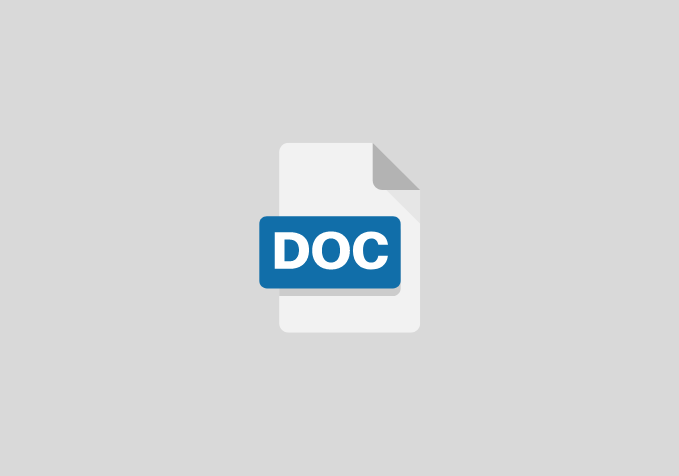Electronic Stamp Duty Payment System
Chapter One
Objectives of the Study
To develop a system that should be able to:
- eliminate stamp counterfeit.
- reduce costs of compliance and improve tax compliance.
- enable easy detection of defaulters as necessitated by inefficient manual systems
Chapter Two
Literature Review
Introduction
This chapter takes a look at the theoretical background and review of related literature. The first section briefly describes the concepts and technologies used in designing the proposed system and how they are used (section 2.1). Section 2.2 focus on the review of related work with a view to identifying its structure, functionalities and drawback.
Theoretical Background
The major technologies used in this project are web documents that is, files written in HTML. The web documents are rendered to be visible (or presented) to the user by an application program known as a web browser (e.g, Firefox, Opera, chrome, Internet Explorer, etc). Each of the HTML documents is a sequence of elements. An element consists of a start Firefox http://webcache.googleusercontent.com/search?q=cache:2HnkCAIb51M… cascading style sheet. I used a form to collect client data- first name, middle name, surname, sex, date of birth, email, etc from a client entity. A form is a collection of data fields for collecting input, such as first name, last name, date of birth, sex, address, email, phone number, username, password, etc from a user entity and a submit button to send the collected data to a EJB/Seam component for proper processing of the data. The form element has an ACTION attributen which supplies the address, better known as universal resource locator (url), of this action document.
The following are fragments of HTML forms that I will use in my application. <h:form id=”clientRegisteration”>
<h:outputLabel for=”title”>Title</h:outputLabel>
Chapter Three
System Analysis and Design
Introduction
System analysis and design are phases and related activities of system development life Firefox http://webcache.googleusercontent.com/search?q=cache:2HnkCAIb51M… understanding about systems that must be constructed. It is used to understand, design, browse, configure, maintain and control information about such systems. It is intended for use with all development methods, lifecycles stages, application domains, and media. The UML also contains organizational constructs for arranging models into packages that permits software terms to partition large system into workable pieces, to understand and control dependencies among the packages, and to manage the versioning of model units in complex development. It contain construct for representing implementation decisions and for organizing run-time elements into components. This methodology does the following:
- Identify key usage scenarios for the system (usually from the perspectives of different kinds of users who will be using the software, and what will they be using it to do).
- Describe the interactions between the user and the system in the execution of a usage scenario- i.e. what actions does the user perform and how does the system respond to those actions (outcomes)?
- Assign responsibility for the outcomes to the most appropriate objects in the system.
Chapter Four
System Implementation
Firefox http://webcache.googleusercontent.com/search?q=cache:2HnkCAIb51M… components creating applications by using component subsets. Developers create, share and edit generic projects and files in the platform, while participating within a multiple team development environment repository.
However, the entire project comprises of three components: the presentation tier which produces the interface that the users interact with, the middle tier which houses the business logicof the application and the data source tier which provides persistence layer to the applications data. The presentation tier was done with Java Server Faces (JSFs), Facelets, Richfaces and Cascading Style Sheet (CSS), whereas the middle tier was done with Java Persistence API (JPA)
Chapter Five
Recommendations
From the findings, the following recommendations were made:
- There is need for immediate or future implementation of online payment of stamp duty by the FIRS for efficiency in the system.
- FIRS should call the clients for training at the different branches to enable sensitization about the services that are rendered and therefore communicate all the reasons for the adoption of e-Stamp service as this will motivate the uses of the service, hence increase
There is also a need to ensure that the Officers in Domestic Tax Department of FIRS and the Credit Officers in the Banks are actually trained in the proper administration and management of the stamp duty.
Suggested Areas for Further Works
The researcher is suggesting that these areas should still be explored for further study.
- Integrated Tax Administration System (ITAS).
- A study to assess the attitudes towards the stamp duty administration by the customers of
References
- Noto N. A., The Effect of Property Tax Policies on Property Values and Rents, Cambridge: Mass Lincoln Publishers, 1981, pp. 98-100.
- Kayaga, L. Tax Policy Challenges Facing Developing Countries: A case study of Uganda” M.Sc. thesis, Queens University Kingston, Ontario, Canada, 2007, pp 10-12.
- Manly, T.S., Thomas, D.W and Ristema, C.M, Attracting nonfilers through amnesty programes. Journal of American Taxation Association, vol. 27 no. s-1, 2005, pp. 75-95.
- Kun, C., Melih, K., Sangjae, L and Gyoo, G., User evaluation of tax filing websites. Journal of online information Review, vol. 32, no. 6, 2008, pp. 842-859


